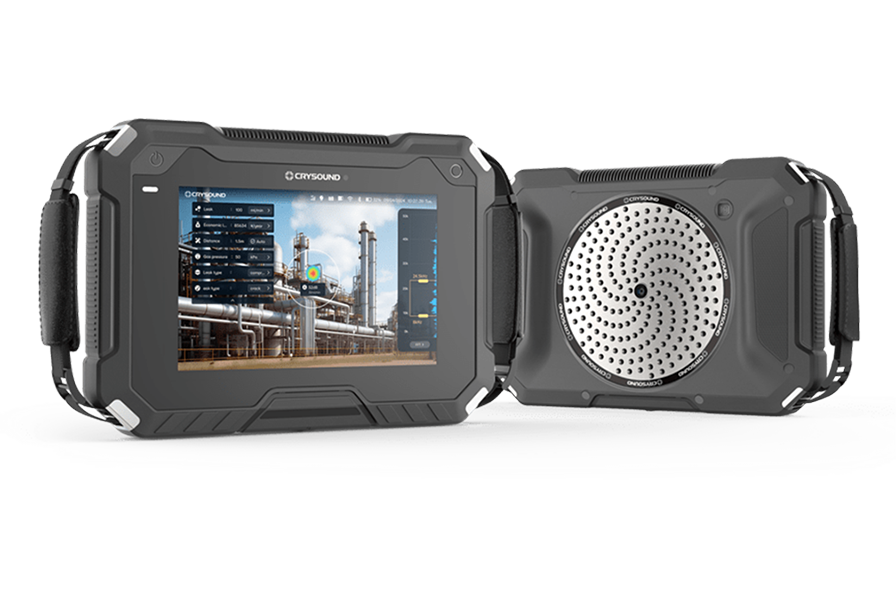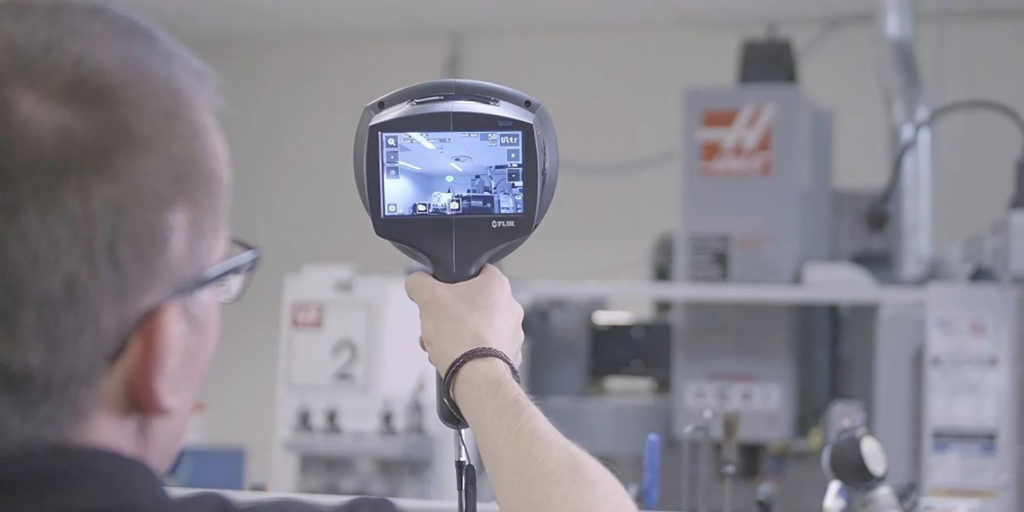
Guide
Acoustic Leak Detection: Top Acoustic Imagers & More [New for 2025]
Acoustic leak detection is an NDT method that uses special sensors and microphones to pick up sounds that may indicate the presence of a flaw, and pinpoint its location.
→ Jump to the best acoustic imagers of 2025.
In plain terms, it’s like using your ears, but a lot more precise and with much better gear.
When a pressurized system springs a leak—whether it’s a pipeline, a tank, or an HVAC duct—it doesn’t just release fluid or gas. It also makes noise.
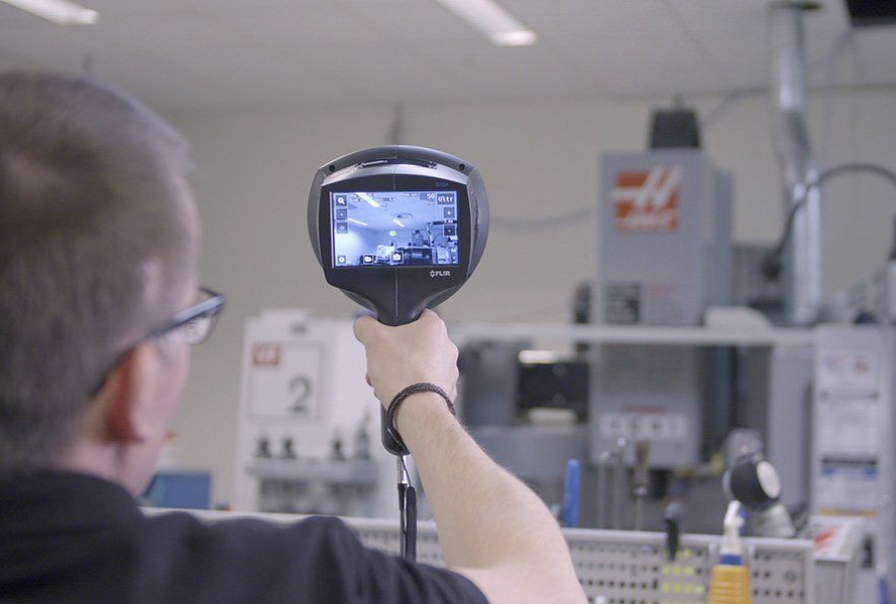
Unlike traditional leak detection methods, which rely on pressure changes, dyes, or digging up infrastructure, acoustic leak detection can locate problems in real time, often without having to shut anything down.
It’s fast, efficient, and increasingly essential for industries where downtime or undetected leaks come with high risks and high costs.
[Related read: What Is LDAR? Your Guide to Leak Detection and Repair]
That’s why acoustic leak detection equipment is becoming standard in sectors like Oil & Gas, chemical processing, and municipal water systems. These environments are complex, loud, and often difficult to access. Acoustic tools cut through that noise—sometimes literally—to help inspectors find small issues before they become major failures.
Whether you’re dealing with a buried water main or a massive refinery pipeline, this approach offers a reliable way to monitor integrity without disrupting operations.
In this guide, we’ll break down everything you need to know about acoustic leak detection: how it works, the different types of acoustic inspection methods, the tools involved, and when it makes sense to bring in professionals.
Use the menu to the right to jump around, or keep reading to see the top acoustic imagers on the market.
Acoustic Leak Detection Equipment for Sale & Rent
Want to buy or rent an acoustic imager for acoustic leak detection? Here are the top options on the market.
1. CRYSound 2626G UAV Acoustic Imager
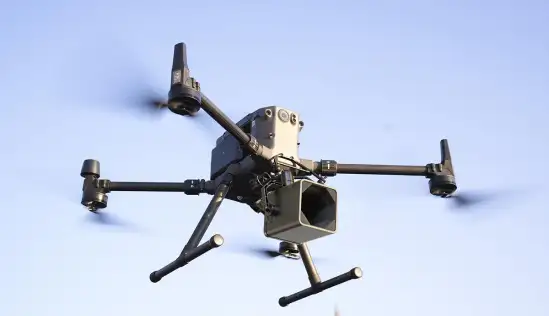
The CRYSound 2626G is a drone-mounted acoustic imaging system designed for high-elevation or hard-to-reach leak detection.
Equipped with a 64-microphone array and real-time acoustic visualization, it delivers powerful ultrasonic leak detection capabilities while in flight—ideal for inspecting flare stacks, elevated pipe racks, or storage tanks in Oil & Gas, utilities, and chemical processing facilities.
Key features of the CRYSound 2626G UAV acoustic imager:
- Drone-compatible leak detection. Mounts on DJI M300/M350 drones for remote ultrasonic inspections in elevated or inaccessible areas.
- 64 MEMS microphones. Provides accurate leak localization from the air using a wide detection frequency range of 2–65 kHz.
- Real-time acoustic imaging. Visualizes ultrasonic leak sources as heatmaps over live video during flight operations.
- Lightweight and rugged design. Engineered for flight stability, payload efficiency, and reliable performance in industrial environments.
Buy or rent the CRYSound 2626G.
2. CRYSound 2623 Acoustic Imager
Featuring 124 high-sensitivity MEMS microphones, the 2623 creates real-time sound maps that make it easy to identify leak locations at a glance. Its lightweight, portable design and user-friendly touchscreen interface make it ideal for both routine inspections and on-the-go troubleshooting across industries like Oil & Gas, manufacturing, and utilities.
Key features of the CRYSound 2623 acoustic imager:
- Real-time sound visualization. Displays ultrasonic leak sources as intuitive heatmap overlays on live video.
- High-microphone array resolution. Equipped with 124 MEMS microphones for precise sound detection across a wide frequency range (2–65 kHz).
- Easy operation in any environment. Built-in touchscreen interface, portable design, and rugged casing allow use in challenging field conditions.
- Data capture and analysis. Stores images, videos, and sound data for offline review or report generation—ideal for audit trails and maintenance planning.
Buy or rent the CRYSound 2623.
3. CRYSound 8124 Acoustic Imager
The CRYSound 8124 Acoustic Imager is a high-performance leak detection tool built for large-scale industrial environments where speed, accuracy, and mobility matter.
Designed with a long detection range and an intuitive visual interface, this imager helps inspection teams cover more ground in less time—making it well-suited for facilities with high ceilings, hard-to-reach equipment, or wide inspection zones.
Key features of the CRYSound 8124 acoustic imager:
- Extended detection range. Detects ultrasonic sound from farther distances, enabling safe and efficient inspections without close contact.
- Precision sound mapping. Uses 124 MEMS microphones to create real-time heatmaps of leak locations, even in noisy environments.
- Wide industrial compatibility. Ideal for large plants, refineries, and utility operations with expansive or complex systems.
- Portable and field-ready. Lightweight design with a touchscreen display, onboard storage, and rugged housing built for tough work conditions.
4. Fluke SV600 Fixed Acoustic Imager
The Fluke SV600 Fixed Acoustic Imager is a continuous monitoring solution designed to detect and locate leaks before they cause downtime or safety issues. Unlike handheld units, the SV600 is installed in place—providing automated, around-the-clock acoustic monitoring of critical systems.
It integrates seamlessly with existing Fluke systems and asset management platforms, making it a powerful tool for proactive maintenance programs.
Key features of the Fluke SV600 fixed acoustic imager:
- 24/7 leak detection. Constantly monitors systems for changes in sound signatures and alerts maintenance teams to potential issues in real time.
- Accurate sound localization. Uses a 64-microphone array to detect and visualize the exact location of leaks and mechanical faults.
- Smart integration. Compatible with Fluke’s eMaint CMMS and other platforms for seamless data logging, trending, and analysis.
- Ideal for critical assets. Designed for permanent installation in areas where continuous monitoring is essential, such as production lines and energy systems.
5. FLIR Si124 Acoustic Imaging Camera
The FLIR Si124 Acoustic Imaging Camera is a powerful handheld tool designed to detect and visualize leaks in compressed air systems, vacuum systems, and electrical partial discharge sources.
Equipped with 124 microphones and AI-driven analytics, the Si124 not only helps identify issues quickly but also prioritizes them based on severity.
Key features of the FLIR Si124 acoustic imaging camera:
- Dual-purpose detection. Identifies both air/gas leaks and electrical partial discharges (corona, arcing, tracking) for comprehensive system monitoring.
- High-resolution acoustic imaging. Features a 124-microphone array and onboard processing for fast, precise leak localization.
- AI-powered diagnostics. Automatically classifies issues by severity and type, helping teams prioritize maintenance tasks.
- Lightweight and user-friendly. Ergonomic design and intuitive controls make it easy to use for technicians of all experience levels.
What Is Acoustic Leak Detection?
At its core, acoustic leak detection is all about using sound to find problems.
When a gas or liquid escapes from a pressurized system—like a pipe, valve, or storage tank—it creates a sound. That sound can be picked up using specialized microphones or sensors, giving inspectors a way to detect and locate the leak without having to dig, dismantle, or disrupt operations.
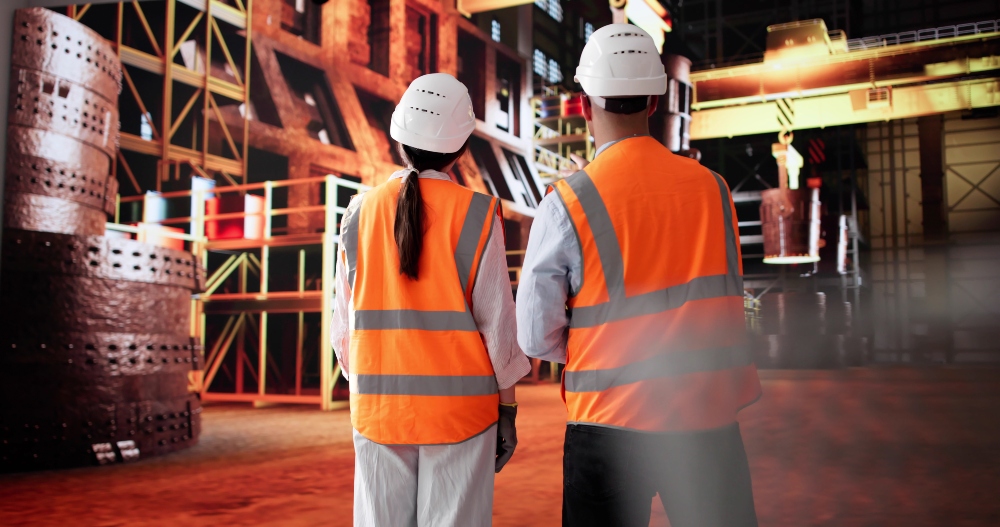
So, what is acoustic leak detection?
It’s a non-invasive inspection method that identifies leaks by listening for the high-frequency noises they produce. These sounds often aren’t audible to the human ear, but with the right equipment, they can be captured, amplified, and analyzed to pinpoint exactly where a leak is happening.
Compared to traditional techniques like pressure decay testing, dye injection, or bubble testing, acoustic methods offer a faster and more precise solution.
Where those older approaches might require shutting down systems or waiting hours to confirm a leak, acoustic tools can deliver real-time results—often without interrupting operations. That makes them especially useful in high-risk or high-value environments, where time and safety are critical.
When Acoustic Leak Detection May Not Work
While acoustic leak detection is a powerful tool, it’s not always the perfect fit for every situation. Like any inspection method, it has its limits—and understanding those limits is key to getting accurate results.
Here are a few scenarios where acoustic methods may not be as effective:
1. Low-Pressure Systems
In systems operating below 15–20 psi, the leak may not create enough turbulence to produce a strong acoustic signal. Without sufficient pressure, even a noticeable leak might be too quiet for detection tools to pick up—especially if background noise is present.
2. Plastic or Non-Metallic Piping
Materials like PVC and HDPE tend to absorb and dampen sound, making it harder for microphones or correlators to detect leaks. Metal pipes, by contrast, transmit sound much more effectively, improving detection accuracy.
3. Deep Underground Pipes
Ground microphones become less effective as pipe depth increases. For pipes buried deeper than 7 or 8 feet, especially in soft or loose soil, sound waves are often absorbed before they reach the surface—making detection difficult without supplemental tools.
4. Noisy Industrial Environments
In settings like manufacturing plants or refineries, ambient noise from machinery can overwhelm the subtle signals produced by leaks. Even with filters and directional gear, isolating the right frequency often requires an experienced operator and may not always be reliable.
This doesn’t mean acoustic methods aren’t useful in these situations—but they may need to be paired with other technologies like thermal imaging, gas sniffers, or pressure monitoring tools. Choosing the right combination of tools is often the key to a successful inspection strategy.
Acoustic Leak Detection as Part of a Hybrid Strategy
While acoustic tools are incredibly effective on their own, they often deliver even better results when used alongside other inspection technologies.
Many inspection teams today are taking a hybrid approach—combining acoustic leak detection with visual, thermal, or gas-sensing tools to get a more complete picture.
For example, if a facility is running high-pressure gas lines through insulated piping, an acoustic camera might detect the general location of a leak, while a thermal imager could confirm it by identifying a temperature drop.
In some cases, ground-penetrating radar (GPR) or tracer gas may also be used to support or verify acoustic findings—especially when dealing with underground or non-metallic pipes.
By pairing technologies, inspectors can overcome limitations—like low sound transmission in plastic pipes or excessive background noise—and still deliver accurate, actionable results.
How Does Acoustic Leak Detection Work?
Every leak makes a sound. And that sound can be picked up, if you have the right equipment.
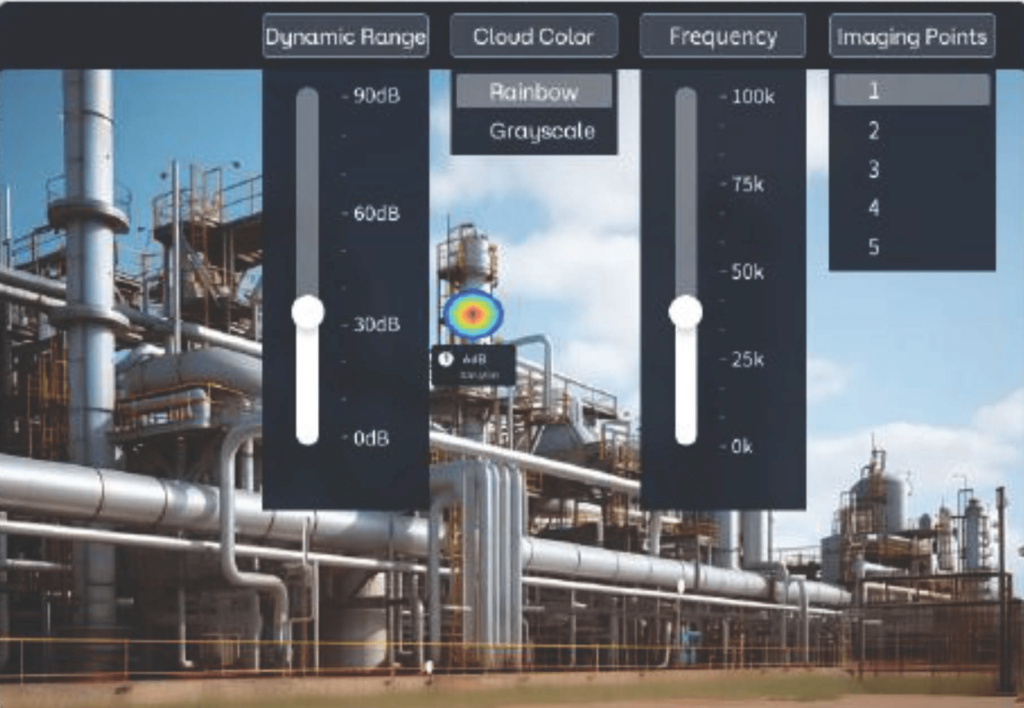
When a pressurized gas or liquid escapes from a small opening in a system, it produces a high-frequency noise. This could be a hissing, whistling, or even an ultrasonic sound that the human ear can’t hear.
But with the right tools, those sounds can be detected, amplified, and analyzed to pinpoint exactly where the leak is coming from.
So, how does acoustic leak detection work?
It starts with the leak itself. As the fluid or gas rushes out, it generates turbulence and friction, which in turn produces sound waves. These sound waves travel through air or along the surface of pipes, tanks, and other components.
What Does a Leak Sound Like?
In pressurized systems—especially those over 30 psi—leaks often produce a distinctive baritone or hollow tone.
This signature sound stands out from ambient mechanical noise and gives trained technicians a reliable clue that something’s not right. The higher the pressure and the smaller the opening, the sharper and more pronounced the sound becomes.
Different types of leaks can produce different frequencies. That’s why acoustic leak detection equipment often includes filters or frequency tuning to help isolate leak-related sounds from background noise.
Environmental Factors That Affect Detection
Several variables can affect how leak sounds travel and how well they can be detected:
- Pipe material. Metal pipes carry sound better than plastic (PVC), which tends to dampen acoustic signals.
- Pipe depth. The deeper the pipe, the more the ground absorbs sound, making detection more difficult.
- Soil and surface conditions. Hard surfaces like concrete or asphalt reflect sound differently than grass or loose soil, affecting what the sensor picks up.
- Ambient noise. Loud industrial environments can mask leak sounds unless specialized filters and microphones are used.
Technicians take all these variables into account when planning inspections or choosing which acoustic tools to deploy.
Detection and the Signal Chain
To pick up leak signals, inspectors use a variety of acoustic leak detection equipment.
Contact microphones are great for attaching directly to surfaces, while parabolic microphones and ultrasonic sensors can scan broader areas. Some setups use handheld devices, and others involve larger acoustic dishes or cameras.
Once the sound is detected, it moves through a signal chain that’s surprisingly straightforward.
First comes detection, followed by amplification and filtering—this helps strip out background noise and focus on the signal that matters. From there, the data is sent to software or handheld devices for analysis and interpretation.
Depending on the setup, inspectors might see a simple readout or even a visual representation of the sound.
Why Skilled Operators Still Matter
In environments like refineries or busy utility corridors, background noise can make things tricky.
That’s where the human element comes in. Skilled operators are essential for interpreting what the equipment picks up—knowing when a signal is a real leak versus just ambient industrial noise.
This process is part of a broader set of practices known as acoustic data collection methods. It’s not just about using a microphone. It’s about applying a systematic approach to capturing and understanding acoustic signals in the field.
Done right, acoustic leak detection offers a reliable, repeatable way to catch leaks before they cause downtime, safety issues, or unnecessary costs.
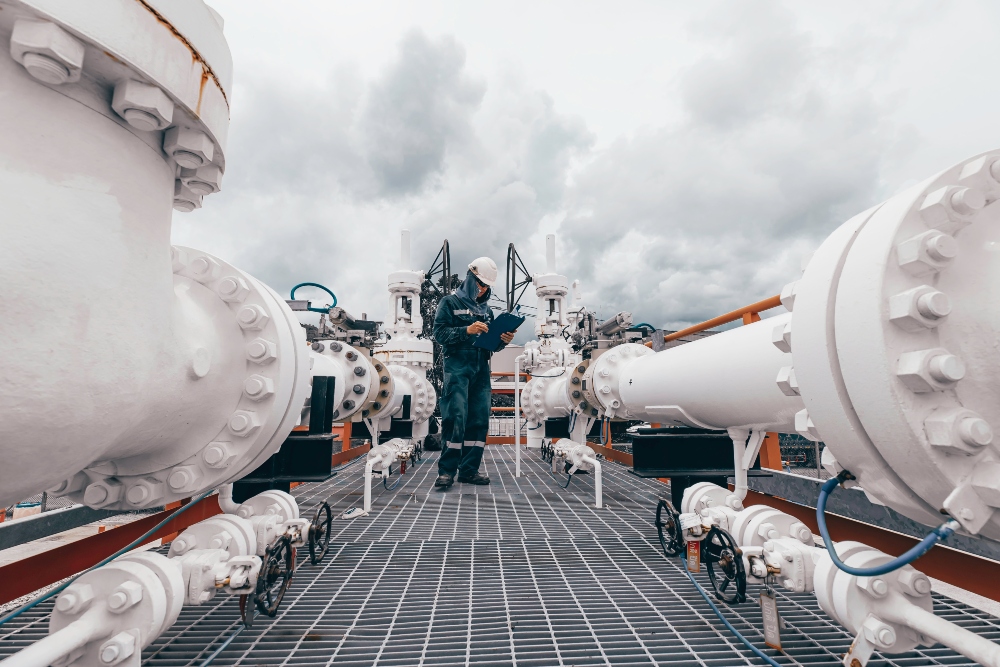
Types of Acoustic Inspection Methods
Acoustic leak detection is an umbrella term describing various techniques that use acoustic data—such as sound or ultrasonic signals—to inspect and locate leaks in pressurized systems.
Depending on the environment, material, and inspection goals, different methods are used to capture and analyze sound. From passive sensors to high-tech cameras, the tools may vary—but they all rely on the same principle: using sound to uncover what the eye can’t see.
Here’s a breakdown of the most common types of acoustic inspection methods and how each one plays a role in modern industrial inspections.
Acoustic Emission Testing
Acoustic emission testing is a bit different from other acoustic methods. Instead of listening for sounds from a leak, this technique picks up on tiny stress-related signals coming from within the material itself.
When a structure—like a pressure vessel or storage tank—is under load or begins to crack, it releases a burst of energy in the form of sound waves.
These sounds are often too faint or too high-frequency for traditional microphones to catch, but specialized sensors can detect them. That makes acoustic emissions ideal for real-time structural monitoring, especially in critical infrastructure where even small defects can have major consequences.
Pros: Great for early warning signs, works while systems are in use
Cons: Limited to materials under stress; doesn’t directly detect leaks
Learn more about acoustic emission testing.
Passive Listening Devices
This is probably what most people imagine when they think of acoustic leak detection.
Passive listening devices use tools like directional microphones, contact sensors, or hydrophones to “listen” for leak-associated sounds in pressurized systems.
Because they don’t emit any signal or interfere with the system, they’re simple to deploy. Technicians can walk a pipeline with a handheld sensor or use remote gear to monitor hard-to-reach areas.
This method is especially popular for water utilities and gas lines, where mobility and fast response are key.
Pros: Lightweight, cost-effective, easy to use in the field
Cons: Less effective in loud environments or with plastic piping
Ultrasonic Leak Detection
Leaks don’t always make sounds we can hear.
That’s where ultrasonic leak detection comes in. It picks up on ultrasonic signals—high-frequency noises produced by leaks—that travel either through the air (airborne) or along the surface of a material (structure-borne).
This method works well in places with a lot of background noise, like factories or chemical plants. Ultrasonic detectors can filter out lower-frequency industrial noise and zero in on the telltale hiss of a leak.
Pros: Performs well in noisy settings, detects small leaks
Cons: May require close proximity to leak; effectiveness can drop with large-diameter or low-pressure systems
Acoustic Cameras (Leak Detection Cameras)
An acoustic leak detection camera takes things to the next level.
These devices use arrays of microphones to not just detect sound—but to turn it into a visual image. Essentially, they let you “see” where a sound is coming from in real time, creating an acoustic image.
This is incredibly useful in complex environments with multiple pipes, valves, or machines. Instead of hunting around with a handheld sensor, inspectors can scan an area and instantly spot the exact location of a leak on screen.
Pros: Fast, intuitive, great for large or cluttered inspection zones
Cons: Higher cost; may be excessive for small-scale inspections
Leak Noise Correlators
Leak noise correlators are precision tools that use two or more sensors placed along a pipeline.
By analyzing the time it takes for the leak sound to reach each sensor, the system can calculate the exact location of the leak—down to the foot.
This method is especially helpful when dealing with long pipeline segments, buried lines, or when access is limited. It’s often used by municipal water utilities and in large-scale industrial facilities where passive listening alone isn’t enough.
Pros: Highly accurate, ideal for long or underground pipelines
Cons: Requires known distances between sensors; not as effective on plastic pipes or in very low-pressure systems
Acoustic Leak Detection Services
Sometimes, finding a leak isn’t just about having the right tools—it’s about having the right people behind those tools.
That’s where professional acoustic leak detection services come in.
Many companies choose to hire outside experts instead of using in-house equipment for one simple reason: complexity.
If you’re working in a noisy environment, managing a large facility, or inspecting infrastructure that spans multiple locations, having trained specialists on-site can make a big difference. In some cases, inspections also need to meet regulatory standards or require certified documentation, something a DIY approach may not fully support.
What Does a Typical Acoustic Leak Inspection Look Like?
Here’s a simple breakdown of how a professional acoustic leak detection inspection usually unfolds:
- Site assessment and setup. The inspection starts with evaluating the environment and selecting the right equipment. This could include contact microphones, acoustic sensors, or leak detection cameras—depending on whether you’re working with underground pipelines, aboveground tanks, or HVAC systems.
- On-site testing. Technicians begin listening for leaks in real time, using specialized equipment to monitor for high-frequency acoustic signatures that indicate escaping gas or fluid.
- Signal filtering and noise isolation. In noisy or complex environments, directional microphones or digital filters may be used to isolate leak sounds from background noise.
- Data analysis. Once signals are captured, the data is either reviewed on-site or post-inspection using software tools. The goal is to verify the presence and exact location of the leak.
- Reporting. A final report is generated outlining the leak location, its severity, and suggested next steps—such as immediate repairs, further monitoring, or follow-up inspections.
One of the biggest advantages of hiring professional acoustic leak detection services is the expertise that comes with it.
Certified technicians understand how to interpret data in challenging environments—like busy manufacturing floors or active oil refineries—where background noise or system complexity could otherwise lead to false positives. Their experience ensures you’re making informed decisions based on reliable, accurate information.
Acoustic Fingerprinting and Baseline Monitoring
One of the most cutting-edge trends in acoustic leak detection is the move toward continuous, real-time monitoring using baseline sound profiles—also known as acoustic fingerprinting.
Here’s how it works: when a system is functioning normally, acoustic sensors record a reference profile of the sounds it produces.
These sounds might include the hum of a pump, the movement of fluid through pipes, or the ambient noise of valves and fittings under pressure. That baseline becomes a kind of “audio signature” of a healthy system.
If a leak begins to develop, the sound profile changes—sometimes subtly, sometimes dramatically. Modern acoustic monitoring systems can detect these deviations automatically, triggering alerts long before the leak becomes obvious through other means.
This approach is especially valuable for critical infrastructure or facilities that run 24/7, where downtime isn’t an option.
Fixed systems like the Fluke SV600 use this kind of monitoring to continuously analyze and compare current acoustic data to the baseline, helping teams catch problems early and act fast.

Acoustic fingerprinting is part of a broader shift toward predictive maintenance, where systems are monitored in real time and maintained based on data—not guesswork.
That means it’s not just about detecting leaks anymore. It’s about detecting changes before they turn into leaks.
Use Cases for Acoustic Leak Detection
One of the biggest advantages of acoustic leak detection is its versatility.
From oil pipelines in remote terrain to HVAC systems in high-rise buildings, this method adapts to a wide range of environments.
Here’s a look at how different industries are using sound to stay ahead of costly—and often dangerous—leaks.
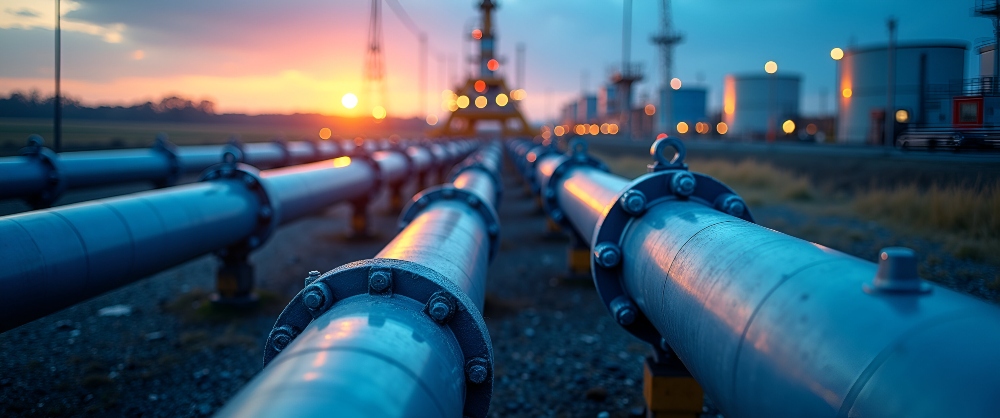
Oil & Gas Pipeline Monitoring
Imagine a pipeline stretching for hundreds of miles across rugged terrain. A small leak, if undetected, can escalate into a major environmental incident—not to mention millions in cleanup and lost product.
In one example, a midstream oil company used acoustic sensors along a buried pipeline to detect changes in sound signature that pointed to a pinhole leak.
Traditional pressure monitoring didn’t catch it, but acoustic tools picked it up early, helping the team isolate the section and carry out a targeted repair.
Key benefits:
- Early leak detection in hard-to-access areas
- Real-time monitoring without interrupting operations
- Lower risk of catastrophic failure
Aboveground Storage Tank Inspections
In the chemical processing industry, aboveground storage tanks (ASTs) are critical—and expensive—assets. A hidden crack or leak at the base of a tank can cause hazardous spills or equipment failure.
Acoustic emissions testing has become a popular choice for tank monitoring.
One inspection crew used acoustic sensors to monitor stress waves within a tank’s metal shell, detecting early-stage cracking that would’ve gone unnoticed with a visual inspection. The company was able to take the tank offline and address the issue before it became a safety risk.
Key benefits:
- Non-invasive testing while tanks remain in service
- Early warning signs of structural fatigue
- Reduced unplanned downtime
Municipal Water Systems
City water systems are full of buried pipelines, many of them aging and prone to leaks. And digging up the street every time there’s a suspected problem isn’t just expensive, it’s disruptive for the community.
Municipalities have turned to acoustic leak detection to pinpoint underground water leaks with minimal surface disturbance.
Technicians use contact microphones and correlators to trace sound signals through the pipe network, identifying leaks before they become sinkholes or service outages.
Key benefits:
- Minimal disruption to infrastructure and traffic
- Cost-effective maintenance for aging assets
- Faster response to leak reports
HVAC Systems in Large Facilities
Compressed air is often called the “fourth utility” in large commercial and industrial buildings—but it’s one that frequently leaks.
In fact, some facilities lose 20–30% of their compressed air to undetected leaks.
Facility managers are using ultrasonic leak detection tools to scan ductwork, air lines, and valves for tiny leaks that waste energy and reduce system efficiency. One manufacturing plant cut its energy bill significantly after a routine inspection revealed dozens of small leaks in a single HVAC zone.
Key benefits:
- Improved energy efficiency
- Better system performance
- Lower maintenance costs over time
Types of Acoustic Leak Detection Equipment
The power of acoustic leak detection comes down to the tools you use. Whether you’re tracking down a small leak in a municipal water line or inspecting a complex network of industrial piping, the right gear can make the difference between a quick find and hours of searching.
Here’s a breakdown of the most common types of acoustic leak detection equipment used in the field—and when each one comes in handy.
Ultrasonic Sensors
Ultrasonic sensors are one of the most versatile tools in leak detection. They pick up on high-frequency sounds—often well above the range of human hearing—that are produced when gas or liquid escapes under pressure. These sensors are particularly useful in noisy industrial settings, where traditional listening tools might miss subtle acoustic signals.
They’re commonly used in plants, refineries, and compressed air systems to spot leaks without interrupting operations. They’re also portable, easy to use, and work well for both quick checks and more detailed inspections.
Contact Microphones
Contact microphones are designed to attach directly to surfaces—like pipes, valves, or tanks—to pick up vibrations caused by internal leaks. They’re ideal for situations where airborne noise would otherwise make detection difficult.
Because they connect directly to the structure, they provide a clean signal and are especially useful when working with metal piping or in loud environments where ambient noise is a challenge.
Ground Microphones
Ground microphones are a go-to tool in water system inspections, especially when leaks are suspected beneath concrete, pavement, or soil. These devices are placed directly on the ground and can detect the sound of leaking water traveling through the earth.
To reduce background noise, technicians often use accessories like rubber shields (sometimes called “elephant feet”) and digital filters to isolate leak sounds. By comparing decibel levels across multiple points, they can hone in on the most likely location of the leak—even if it’s underground.
Parabolic Microphones
If you’re trying to isolate a leak sound from a distance or in a crowded area, a parabolic microphone is a solid choice. These devices focus on a narrow field of sound, allowing inspectors to “zoom in” on specific sections of equipment or infrastructure.
They’re often used in outdoor inspections—like pipeline routes or tank farms—where pinpointing the direction of a sound can save a lot of time and effort.
Leak Noise Correlators
Leak noise correlators are a more advanced option used when pinpoint accuracy is needed—especially in long pipeline segments or buried infrastructure. Two sensors are placed at known distances apart on the pipeline. The correlator analyzes the time delay between when each sensor detects the leak sound and calculates the leak’s location based on that delay.
This method is especially effective when ground microphones alone can’t narrow the location enough. It’s widely used by municipal water utilities and in large-scale industrial systems.
Acoustic Cameras
An acoustic leak detection camera brings a visual layer to your inspection. These tools use arrays of microphones to detect sound, then translate that data into a real-time image—essentially letting you “see” where a leak is happening.
This is one of the fastest ways to locate a leak, especially in complex systems with multiple pipes or components. It’s intuitive, efficient, and great for teams that want to speed up diagnostics without sacrificing accuracy.
Acoustic Leak Detection Kit vs. Individual Components
If you’re starting from scratch, an all-in-one acoustic leak detection kit can be a smart move. These kits usually include a base unit, a set of microphones (often both contact and airborne), cables, headphones, and a carrying case. Some kits also include basic software for signal analysis.
The benefit of a kit is convenience—everything you need in one package. This is ideal for teams that are just getting into acoustic inspections or want a plug-and-play setup.
On the other hand, purchasing components individually gives you more flexibility. If you already have certain equipment or need to upgrade specific parts of your setup, going piece-by-piece lets you build a custom system tailored to your inspection needs.
Equipment Cost and When to Rent vs. Buy
The price range for acoustic leak detection equipment can vary widely.
Basic handheld units might start around $1,000, while high-end acoustic cameras can run $20,000 or more. Kits fall somewhere in the middle, depending on what’s included.
If you’re performing inspections regularly, especially across multiple locations or facility types, investing in your own gear can be cost-effective. But if you’re dealing with a one-off inspection, large-scale issue, or don’t have trained staff in-house, renting is a practical and affordable option.
MFE Inspection Solutions offers both purchase and rental options, so you can get the right tool for the job—on your terms.
Acoustic Leak Detection FAQ
Here are answers to the most commonly asked questions about acoustic leak detection and acoustic imagers.
What is acoustic leak detection?
Acoustic leak detection is a method that uses sound to identify leaks in pressurized systems like pipelines, tanks, and HVAC equipment. When a gas or liquid escapes through a small opening, it creates high-frequency sound waves that can be picked up by specialized sensors. This method helps inspectors find leaks quickly without damaging equipment or disrupting operations.
How does acoustic leak detection work?
When a leak occurs, it produces noise—often in the ultrasonic range—that acoustic sensors can detect. These signals are amplified, filtered, and analyzed to pinpoint the leak’s location. It’s a non-invasive, real-time way to locate leaks with precision, even in complex systems.
What is an acoustic leak detection camera?
An acoustic leak detection camera is a tool that visualizes sound. It uses an array of microphones to detect where a noise is coming from, then displays that sound as a visual image. These cameras make it easier to locate leaks quickly, especially in large or noisy environments.
Can acoustic leak detection work in noisy environments?
Yes, and that’s one of its biggest strengths. Many types of acoustic leak detection equipment are designed to filter out background noise and focus on the high-frequency sounds that leaks produce. Skilled operators also play a key role in separating real signals from false alarms.
How accurate is acoustic leak detection?
When used correctly, acoustic leak detection is highly accurate—often pinpointing leaks within inches. Accuracy depends on factors like sensor quality, operator experience, and environmental conditions, but it’s generally much faster and more precise than traditional leak detection methods.
Is this method suitable for underground pipes?
Absolutely. Acoustic leak detection is widely used in municipal water systems to find leaks in buried pipelines. Tools like contact microphones and correlators can trace leak sounds through underground networks with minimal surface disruption.
What industries use acoustic leak detection?
Acoustic leak detection is used in a wide range of industries, including Oil & Gas, chemical processing, water utilities, manufacturing, and commercial building maintenance. Anywhere there’s pressurized fluid or gas, acoustic tools can help monitor system integrity and catch problems early.
What’s the difference between acoustic emissions and ultrasonic leak detection?
Acoustic emissions focus on stress-induced sounds from within materials, often used for structural monitoring. Ultrasonic leak detection, on the other hand, captures the high-frequency noise created by fluids or gases escaping from a system. Both are part of broader acoustic data collection methods, but they serve different inspection goals.
Do I need specialized training to use acoustic leak detection equipment?
Basic handheld devices are fairly easy to use with minimal training, but more advanced tools—like an acoustic leak detection camera—may require experience to interpret results correctly. MFE Inspection Solutions offers support and training to help teams get up to speed with the right tools for the job.


